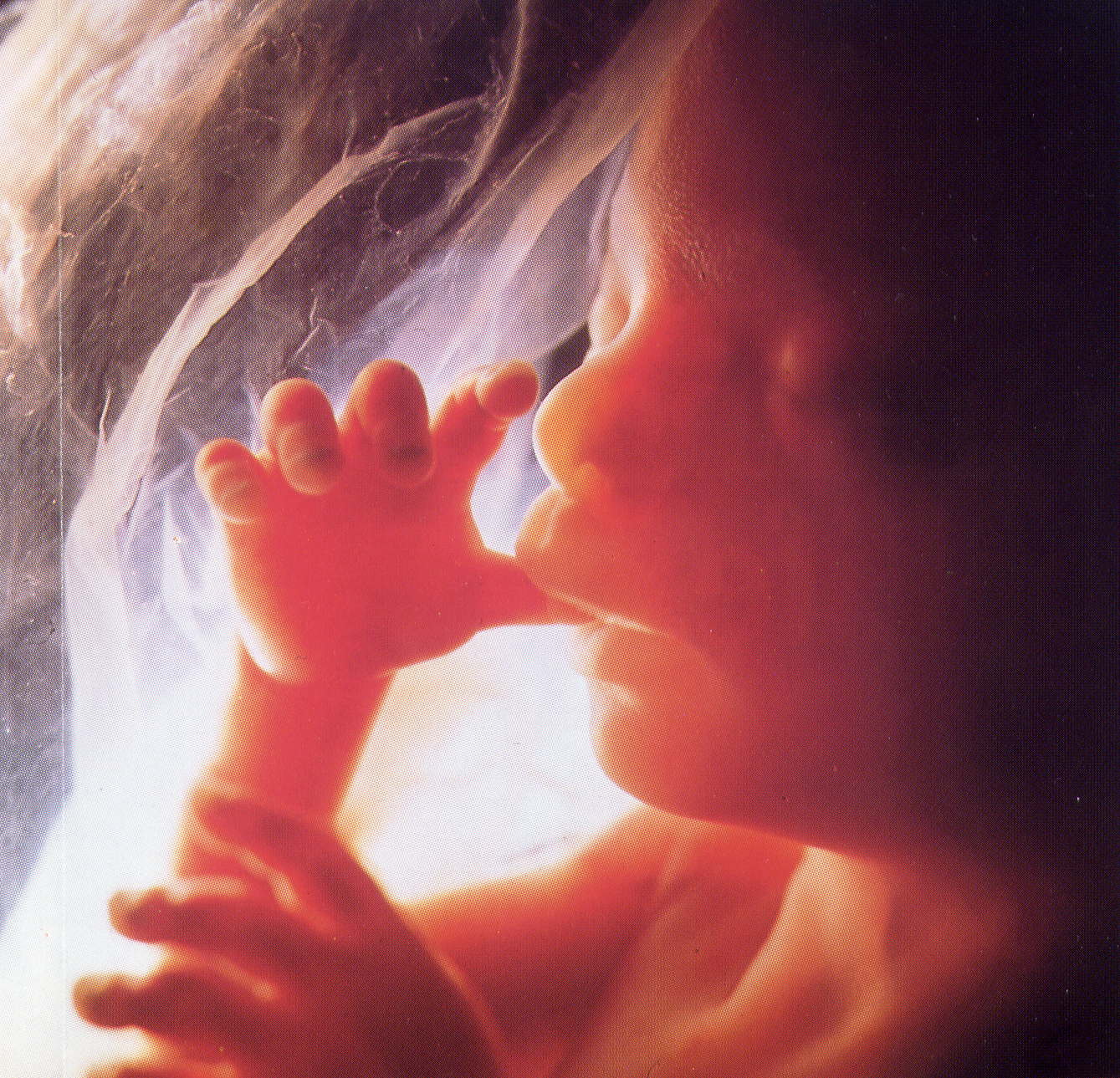 Major Topic One: Reproduction
Major Topic One: Reproduction Human Life Cycle
The life cycle of higher organisms requires two types of cell division.
Mitosis: growth and repair of tissues
Meiosis happens in the ovaries for females. One egg per month bursts from the wall of the ovary to be taken up into the Fallopian tube. This is Phase I. Phase II occurs if the egg is fertilized.
The image to the left illustrates the human life cycle. A detailed explanation is as follows: "This figure illustrates the human life cycle. Adults produce gametes by meiosis, and each gamete contains only one-half the number of chromosomes found in the somatic cells of the parent. Parental cells (containing 46 chromosomes) are called diploid cells, and are abbreviated as "2n." The gametes (containing 23 chromosomes) are called haploid cells, and are abbreviated as "n." When a haploid ovum and a haploid sperm unite through fertilization (also termed syngamy), a diploid zygote is produced. The life cycle describes how diploid (2n) individuals produce haploid (n) gametes, which then unite to form a new diploid (2n) zygote.
This alternation of meiosis and fertilization is found in the sexual life cycles of all sexually reproducing organisms, but its timing can differ considerably, depending on the organism. The human life cycle typifies the most common life cycle found in animals, where the gametes are the only haploid cells. They combine to form a zygote, which divides by mitosis (cell reproduction; discussed in more detail in tutorial 25) and grows to form a new individual.
In a second type of life cycle, as seen in most fungi and some protists (unicellular eukaryotes and their somewhat simple multicellular relatives), the diploid zygote produces haploid cells by meiosis; these develop into free-living, haploid, multicellular organisms. The haploid organisms then produce modified gametes by mitosis (they are already haploid, therefore, they cannot undergo meiosis), and these gametes unite to form diploid zygotes. Some plants and algae exhibit a third type of life cycle, termed alternation of generations. This life cycle contains both haploid and diploid, free-living, multicellular stages. The diploid multicellular stage, the sporophyte, produces spores by meiosis, which develop into a multicellular haploid stage, the gametophyte. The gametophyte produces gametes by mitosis, and these unite to form a new sporophyte. Although these three types of life cycles differ in the timing of fertilization and meiosis, they all produce genetic variation in their offspring ".
 The image to the left shows both the sperm and the egg. If an egg and a sperm meet in the Fallopian tube there is a good chance that one sperm will join with the egg, resulting in fertilization.
The image to the left shows both the sperm and the egg. If an egg and a sperm meet in the Fallopian tube there is a good chance that one sperm will join with the egg, resulting in fertilization.Fetal development extends from the third through the nine months. During the third and fourth months the skeleton is becoming ossified. (bone formation is occurring). The sex of the fetus also becomes evident. The fetus continues to grow and gain weight until it reaches nine months/birth.
During the first stage of birth the cervix dilates. Stage two takes place as the child is born. Stage three is the expelling of the afterbirth. Development after birth includes infancy, childhood, adolescence, and adulthood.
Aging may have a genetic basis and may be due to changes that affect the whole body. (the decline of the hormonal system for example). Aging can also be due to diet and exercise. Deterioration of organ systems can possibly be prevented (in part) by good health habits.




No comments:
Post a Comment